June 8, 2025 | 15:45 GMT +7
June 8, 2025 | 15:45 GMT +7
Hotline: 0913.378.918
June 8, 2025 | 15:45 GMT +7
Hotline: 0913.378.918
Mr. Nguyen Viet Anh, General Director of Southern Irrigation Management Company Limited, noted that the Ministry of Agriculture and Rural Development entrusted the company with the management and operation of irrigation projects in the Mekong Delta. These projects include the Cai Lon, Cai Be, and Xeo Ro culverts within the Cai Lon - Cai Be irrigation system, the Ninh Quoi lock sluices within the Quan Lo - Phung Hiep irrigation system, and the Vung Liem sewers within the Nam Mang Thit irrigation system.
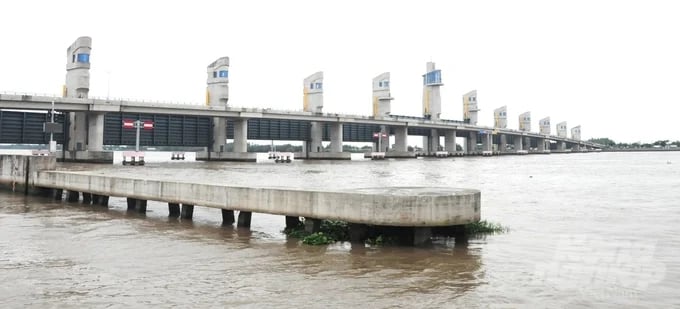
The MARD assigned the Cai Lon - Cai Be irrigation system to the Southern Irrigation Company Limited to manage and exploit, contributing to regulating water sources and protecting the safety of benefit areas in 5 provinces. Photo: Trung Chanh.
These are substantial irrigation infrastructures with cross-regional and inter-provincial impacts, regulating water sources to support production in crucial agricultural areas and safeguarding against adverse effects related to water resources. To effectively manage and operate the assigned irrigation projects, the company has collaborated with the Departments of Agriculture and Rural Development, Irrigation Branches, Crop Production and Plant Protection Branches, and irrigation Management units of Kien Giang, Hau Giang, Soc Trang, Bac Lieu, Ca Mau (for the Cai Lon - Cai Be and Quan Lo - Phung Hiep irrigation systems), Tra Vinh, and Vinh Long provinces (Nam Mang Thit irrigation system). A plan has been developed to operate irrigation works to address drought and saltwater intrusion during the dry season of 2023 - 2024.
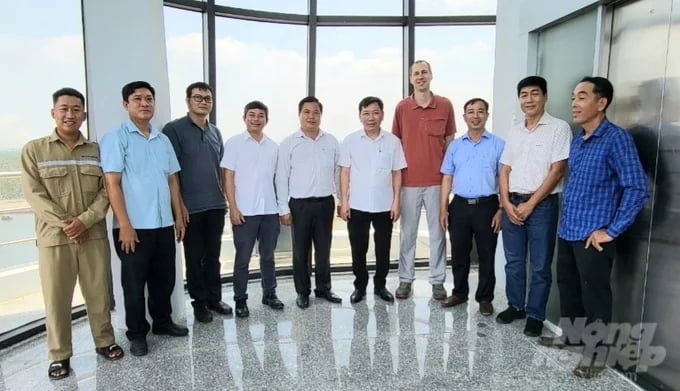
The field trip of several units under MARD, pictured at the top of the Cai Lon - Cai Be irrigation system tower in March 2024. Photo: Trung Chanh.
The operation of these works, serving production and economic livelihoods in the region, benefits from highly efficient systems. Specifically, with the Cai Lon - Cai Be drainage system, upon forecasting potential saltwater intrusion into freshwater areas, the company instructed the Mekong Delta Branch to execute the operation and closure of the Cai Lon, Cai Be, and Xeo Ro sewer clusters. This was done to prevent salinity during high tide and facilitate drainage of salinity during low tide, to prevent deep penetration of saltwater into fields, thus safeguarding production areas within freshwater ecosystems (rice, crops, edible plants, fruits...), ensuring adherence to freshwater-brackish and brackish-salty ecosystems (shrimp-rice, specialized shrimp...), while simultaneously maintaining the ecological environment of beneficiary provinces without adverse impacts or pollution.
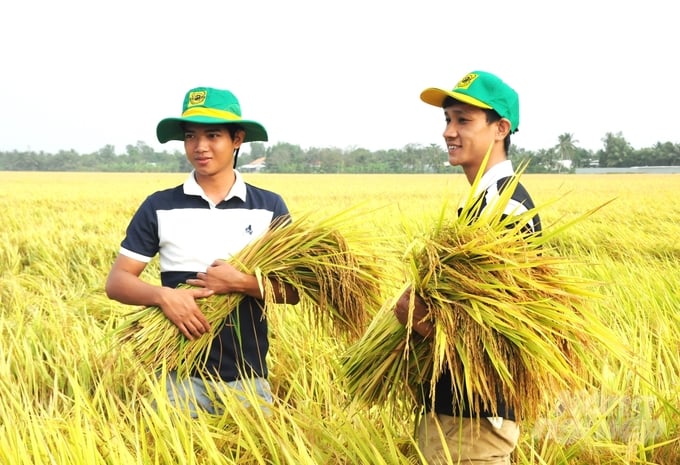
The operation of inter-provincial irrigation projects to serve production and economic livelihoods in the benefiting areas has brought high efficiency, safely protecting rice production areas to overcome peak drought and salinity, bringing successful harvests. Photo: Trung Chanh.
For the Quan Lo - Phung Hiep Irrigation System, the Company collaborates with units under the Department of Agriculture and Rural Development of Bac Lieu and Soc Trang, Bac Lieu Irrigation Works Management and Exploitation Center, and Soc Trang Irrigation Joint Stock Company to operate the Ninh Quoi locks and other locally managed projects within the Quan Lo - Phung Hiep system. Recent operational outcomes have focused on preventing salinity, controlling salinity levels, preserving freshwater, and supporting water drainage to maintain stable agricultural production areas in Soc Trang and Bac Lieu provinces.
The project has successfully achieved the goal of controlling salinity, preventing the passage of saline water exceeding 1‰ (g/liter) through the Cong Da sewer (located in Nga Nam town, Soc Trang province), thereby preserving freshwater for the winter-spring and summer-autumn rice cultivation in Soc Trang and Bac Lieu provinces, covering approximately 26,500 hectares. Additionally, it has effectively prevented salinity from reaching Nga Nam town while providing sufficient saline water for the salt-resistant area of Hong Dan district, encompassing around 8,500 hectares, to support brackish water shrimp farming.

Large irrigation systems, with inter-provincial effects combined with the operation of projects invested by localities in the region, with a total area of rice crops in 2023 of 708,942 hectares and harvest output reaching about 4.5 million tons. Photo: Trung Chanh.
As for the Vung Liem sewer within the Nam Mang Thit Water System, the Company collaborates with the Department of Agriculture and Rural Development, Irrigation Branch, irrigation exploitation units of Vinh Long and Tra Vinh provinces, as well as the People's Committees of Vung Liem district (Vinh Long) and Cang Long (Tra Vinh). Together, they develop plans to operate water supply projects for irrigation, drainage, salinity prevention, and storm surge prevention to serve agricultural production and economic livelihoods in Vinh Long and Tra Vinh provinces. The management, exploitation, and operation of the Vung Liem sewer project have significantly enhanced effectiveness in preventing salinity, combating high tides, supplying freshwater for production, and concurrently ensuring a stable water source for the local population.
The production outcomes of the beneficiary provinces reflect the substantial impact of these efforts, with a total rice cultivation area of 708,942 hectares in 2023. Notably, Kien Giang has the largest rice cultivation area of 314,746 hectares, followed by Bac Lieu province with 189,963 hectares, Hau Giang with 113,561 hectares, Soc Trang with 37,389 hectares, Vinh Long with 25,627 hectares, and Tra Vinh with 27,656 hectares. The major rice crops for the year include the summer crop (rice cultivated on shrimp-rice land) covering 114,135 hectares, the winter-spring crop covering 236,300 hectares, the summer-autumn crop covering 249,352 hectares, and the autumn-winter crop covering 109,155 hectares. The total estimated harvest output is nearly 4.5 million tons.
Furthermore, the regulation of water sources for aquaculture covers a total area of approximately 302,000 hectares, with around 166,000 hectares designated for shrimp farming and the remaining area for fish and other aquatic products. The estimated harvest output is 275,000 tons, comprising 99,000 tons of farmed shrimp and 176,000 tons of fish and other aquatic products.
Mr. Nguyen Viet Anh, General Director of Southern Irrigation Management Company Limited, highlighted that the coordinated operation of irrigation works managed by the unit has yielded significant results in controlling water sources and effectively regulating water for production. Specifically, the operation of the Cai Lon and Cai Be sluice gates has contributed to reducing salinity levels at the Cai Tu and Tram Bau bridge monitoring stations, thereby mitigating the depth of saltwater intrusion into the fields compared to the forecasts of the hydro-meteorological agency.

Vung Liem sluice belongs to the Nam Mang Thit irrigation system and is operated effectively to prevent salinity in Vung Liem and Cang Long districts (Vinh Long province), with the winter-spring rice area of 2023-2024 being 17,305 hectares, vegetable growing area is 1,652 hectares and fruit growing area is 15,361 hectares. Photo: Trung Chanh.
The company has coordinated closely with the Steering Committee for Natural Disaster Prevention, Search and Rescue, and Civil Defense of the provinces in operating works to respond to natural disasters and prevent and combat drought and saltwater intrusion within the beneficiary area. This coordination involves exchanging information on production plans, agricultural production, aquaculture seasonal schedules, and production progress of localities within the project area to devise appropriate water regulation plans.
Furthermore, the company collaborates with institutions such as the Southern Institute of Irrigation Sciences, Southern Institute of Irrigation Planning, Institute of Marine Engineering, Southern Hydrometeorological Station, and Provincial Hydrometeorological Stations to exchange and share information, forecasts, and warnings regarding meteorological, hydrological, water sources, regional water quality, drought, saltwater intrusion, high tide, and sea level rise. This exchange of information serves the planning and operation of works effectively, catering to agricultural production, aquaculture, and economic livelihoods within the project area.
However, the technical infrastructure system's natural disaster resistance capacity, particularly the embankments, is not yet adequate. There is a pressing need to invest in renovating and upgrading upstream and downstream structures to meet the demands for natural disaster prevention and control. Provinces within the project area must conduct research and invest in building a system of works to delineate production sub-regions (fresh, brackish, salty).

Located in the area benefiting from the Cai Lon - Cai Be irrigation system, Hau Giang farmers have just had a bumper harvest of the 2023 - 2024 winter-spring rice crop, selling at a good price and bringing high profits. Photo: Trung Chanh.
Investments in the construction, renovation, and upgrading of works, combined with the West Sea dyke line, are essential to establish a comprehensive system of works to prevent and control natural disasters, high tides, and rising water levels and to respond to climate change effectively. This synchronous, closed system will protect and sustain agricultural production, aquaculture, and economic livelihoods within the project area.
In the beneficiary areas of the Cai Lon - Cai Be and Quan Lo - Phung Hiep rice fields, farmers in seven districts of Kien Giang province within the project area have successfully harvested the 2023 - 2024 rice crop, covering an area of 71,570 hectares, and the winter-spring crop of the same period, spanning 106,122 hectares. The rice harvest has demonstrated high productivity and garnered favorable market prices, resulting in significant profits. Notably, there were no recorded rice damage due to saltwater intrusion or water scarcity.
Similarly, in Hau Giang province, farmers in Long My and Vi Thuy districts, Long My town, and Vi Thanh city have finished harvesting the winter-spring 2023 - 2024 rice crop across 48,774 hectares. Moreover, the cultivation areas for various vegetables, fruit trees (spanning over 15,000 hectares), and aquaculture have been safely protected.
In Bac Lieu province, including Phuoc Long and Hong Dan districts, the fall-winter rice crop covering 6,820 hectares has been entirely harvested. Additionally, the 2023 - 2024 season rice crop, mainly rice cultivated on shrimp-rice land, encompasses 39,795 hectares, while the winter-spring rice crop for 2023-2024 extends over 21,038 hectares.
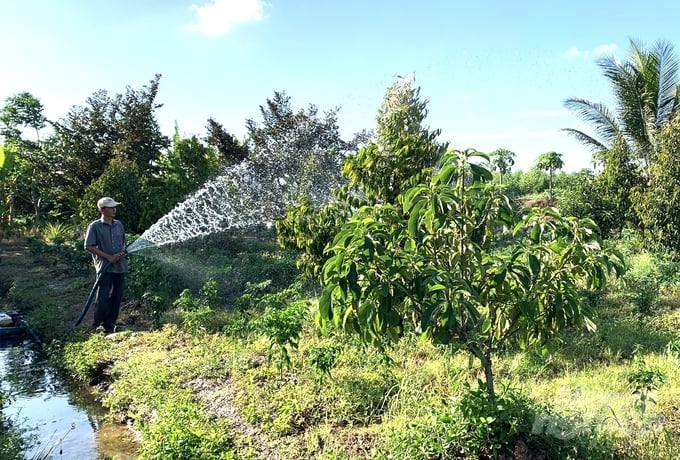
Thanks to a large irrigation system that regulates water sources, right in the middle of the peak drought season, Vinh Long province gardeners still have a water source to protect their orchards from drought. Photo: Trung Chanh.
In Soc Trang province, farmers in Nga Nam town have cultivated the winter-spring rice crop for 2023 - 2024 across an area of 18,500 hectares, planted crops and fruit trees, and engaged in aquaculture across thousands of hectares.
Regarding the Nam Mang Thit Water System benefit area, in Vung Liem and Cang Long districts of Vinh Long province, the winter-spring rice crop for 2023 - 2024 spans 17,305 hectares, with vegetable cultivation covering 1,652 hectares, and fruit orchards covering 15,361 hectares.
According to Mr. Nguyen Viet Anh, the focus on effective management extends beyond just the peak months of the dry season. Throughout the remaining months of 2024, based on the operational protocols of the Cai Lon - Cai Be, Quan Lo - Phung Hiep, and Nam Mang Thit systems, Southern Irrigation Management Company Limited will continue to coordinate closely with provincial authorities, Departments of Water Resources, Agriculture and Rural Development, and irrigation project operators. This collaboration aims to develop operating plans closely aligned with real-time conditions, ensuring optimal support for agricultural production, aquaculture, and regional economic activities. Such efforts contribute significantly to achieving socio-economic targets set by localities for the agricultural sector.
During the dry season of 2023 - 2024, the severity of El Niño, drought, and saltwater intrusion was pronounced. The dry season witnessed reduced water flows, categorized among years with minimal water availability, with saltwater intrusion occurring unpredictably and appearing early. Nonetheless, thanks to the effective operation of irrigation projects, production has been effectively safeguarded, and losses caused by drought and saltwater intrusion have been significantly mitigated.
Translated by Quynh Chi
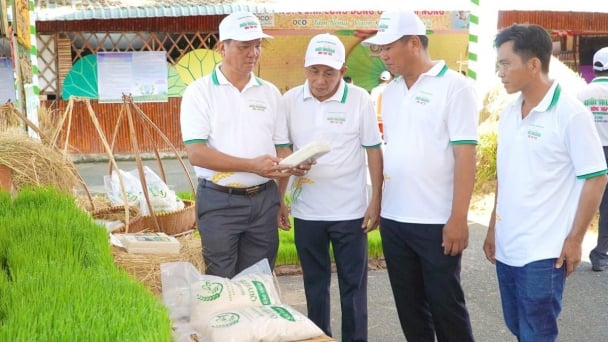
(VAN) Dong Thap has launched a meeting in response to the Action Month for the Environment under the theme 'Live Green - Join Hands for a Green Economy' at Tram Chim National Park.
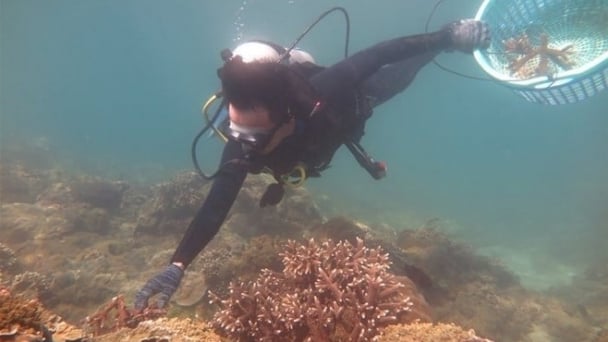
(VAN) The ocean has the capacity to absorb millions of tons of carbon, provided that mangrove forests, coral reefs, and biodiversity are protected.
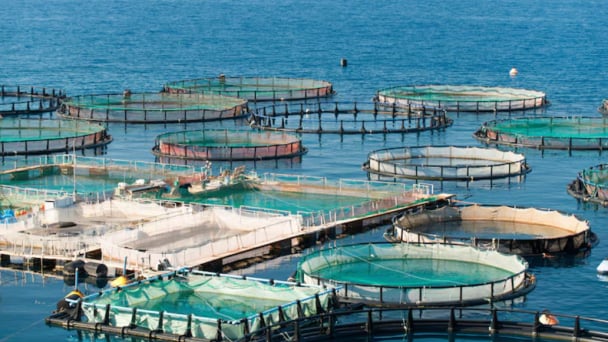
(VAN) Technology is redrawing the map of Vietnamese aquaculture: more modern, greener, and more sustainable.
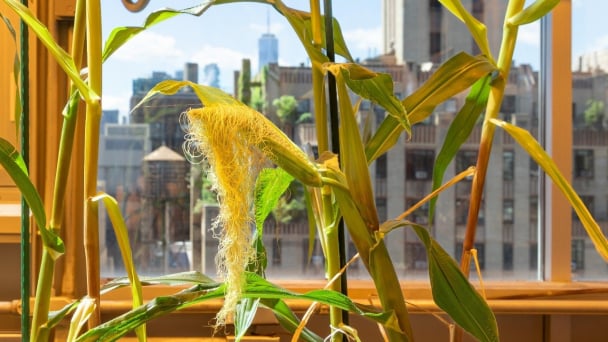
(VAN) Novel process harnesses machine learning to reveal groups of genes that determine how efficiently plants use nitrogen.

(VAN) Several scientists and farmers are experimenting with soil treatment in some key durian-growing regions such as Cai Lay (Tien Giang), Dak Song, Gia Nghia, and Dak R’lap (Dak Nong).
/2025/05/25/4127-3-073637_820.jpg)
(VAN) Thanks to the promotion from an FAO-implemented project, vegetable production in greenhouses in Moc Chau has seen strong development, from 1.5 hectares in 2021 to nearly 50 hectares in 2024.

(VAN) FAO has recently supported USD 140,000 to implement the project 'Risk mitigation human-animal interface risks through disease control initiatives in pig farming.'